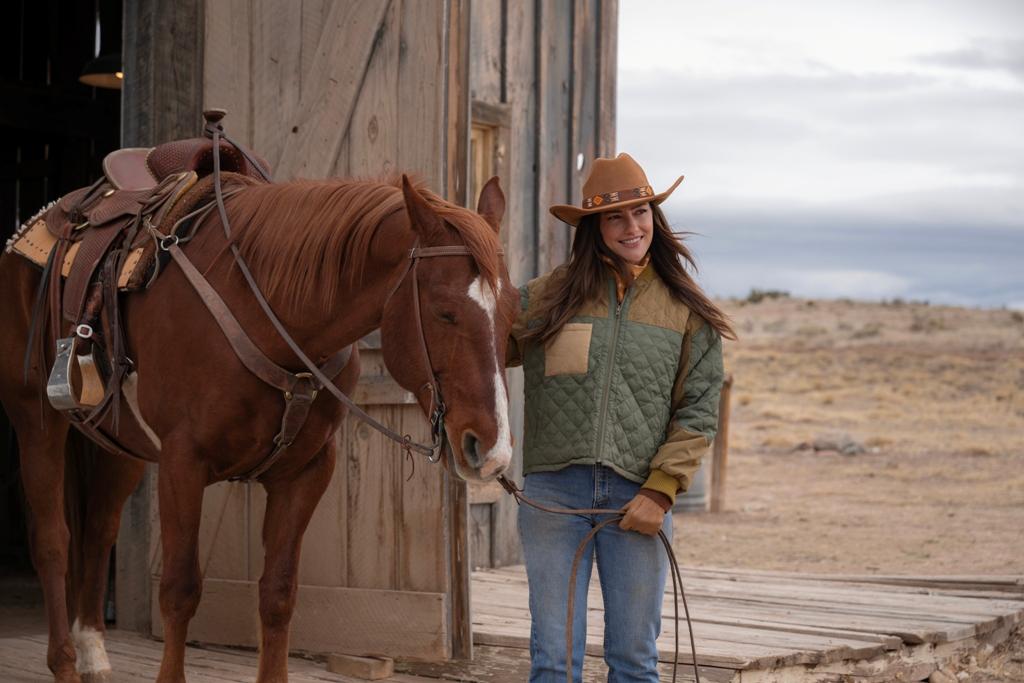With an over-the-top blond Afro hairdo and a voice that rarely rose above a whisper, Ross was to painting what Fred Rogers was to children’s TV: innocuous, unthreatening, and thoroughly predictable (in a comfort food sort of way). His audience was as fervently loyal and devoted to him as any pop star or sports figure of the time and, for many female viewers, an unlikely sex symbol.

Nargle Via Ross
McAdams thrusts all of the above Ross traits upon Carl Nargle (frequent Anderson collaborator Owen Wilson) and sets the story in present-day Burlington, Vermont. Like many rural PBS stations, the one depicted here operates on a shoestring budget, with Carl receiving a relatively small, mid-five-figure salary which still dwarfs that of all his fellow workers.The movie opens with Carl entering his third decade on the air. And after each show, a handful of female employees fawn over him and see to his every need, however minute, fleeting, or incidental.
As we are soon to find out, all of these ladies have been, will, or wants to be romantically involved with Carl, whose surface aloof, aw-shucks demeanor only makes him all the more desirable in their eyes.
The only one not throwing herself at Carl’s feet is his longtime producer Katherine (stage veteran Michaela Watkins) who, for multiple reasons carefully doled out along the way, considers Nargle to be an impossible-to-commit narcissist.
It is initially unclear whether it is Katherine or station manager Tony (Stephen Root) who brings in the younger, equally talented painter Ambrosia (Ciara Renée, best known as Kendra Saunders/Hawkgirl in multiple DC comic book adaptations). She will follow Carl’s show with one of her own having the exact same title (“Paint”).
Ostensibly, Tony tells the immediately paranoid and rightfully leery Carl that Ambrosia was brought in to boost younger demographic viewership, which makes sense as Carl’s core audience comprises mostly those eligible for AARP membership.
Poking Pointed Fun
Doing to public television what Guest-penned flicks did to rock music (“This Is Spinal Tap”), community theater (“Waiting for Guffman”), dog competitions (“Best in Show”), and folk music (“A Mighty Wind”), “Paint” takes a not-so-low-hanging-fruit subject and lovingly pokes pointed fun at it without being overtly sarcastic or mean-spirited.
Double-Duty Period Songs
Sprinkled throughout is a handful of ‘70s songs that pull double duty by also propelling the narrative. Among these are “Barracuda” (Heart), “Annie’s Song” (John Denver), “If You Could Read My Mind” (Gordon Lightfoot), “Coat of Many Colors” (Dolly Parton), and the obscure pop tune “Romeo’s Tune” (Steve Forbert).The final act is arguably the best of the three as it cleverly portrays a man who can no longer rest on his (already iffy) laurels while also realizing, perhaps too late, that his best days might be behind him. Just exactly how McAdams achieves this is at once surprising, thoroughly original, and eventually uplifting.
Also worth checking out is the 2021 documentary “Bob Ross: Happy Accidents, Betrayal & Greed,” available on Netflix. It is a thorough biography that doesn’t sugarcoat the often-contentious events taking place behind the scenes of “The Joy of Painting” show and what happened to the Ross image and estate after his death in 1995.






